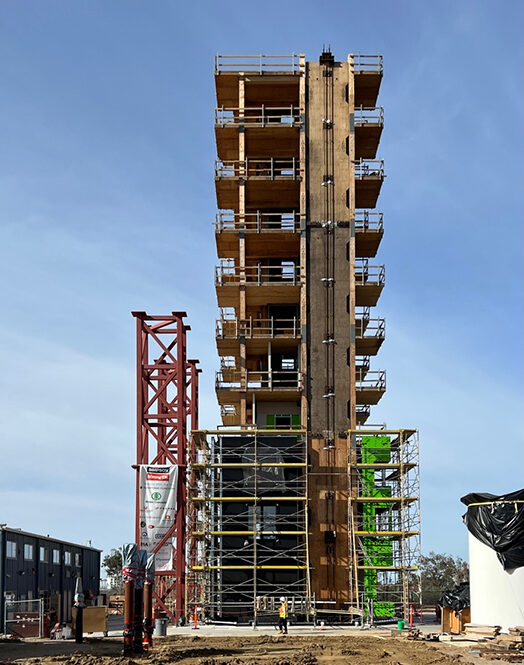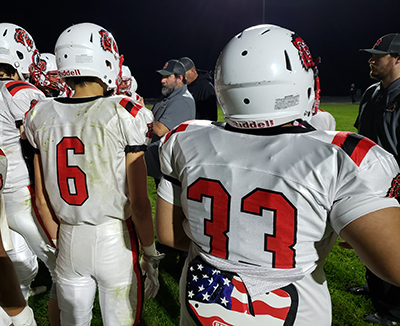Reporter for The Canyon Weekly
Freres Engineered Wood continues to test its mass plywood panels for seismic safety and the panels continue to pass with flying colors.
Last month the Lyons-based company concluded its participation in testing on a 6-story wood structure. Last spring and summer the company participated in tests on a 10-story structure.
Both tests were conducted at a specially designed facility at the University of California San Diego.
Mass plywood panels is a technology in which Freres has been an industry leader. The panels are constructed with density-graded Douglas-fir veneers, which are glued and pressed together, creating large-format wood platforms, beams and columns that can be manufactured in sizes up to 12 feet by 48 feet.
The Natural Hazards Engineering Research Infrastructure (NHERI) project evaluated the functional recovery of a six-story mass timber structure by subjecting the specimen to a series of simulated earthquakes on the world’s largest outdoor shake table at UC San Diego’s Jacobs School of Engineering. Researchers are consolidating the results to provide data that will inform future building codes.
The 6-story experiment and the earlier 10-story test were executed by Oregon State University under the direction of Andre Barbosa, a professor of structural engineering at OSU.
“The 10-story version was intended to test a ‘rocking-wall’ design for seismic mitigation,” Tyler Freres, the company’s VP of sales said, “and the 6-story building project was used to test different lateral force-resisting systems, which included several innovative gravity connections and non-structural systems and a pressurized fire sprinkler system.
“The rocking walls were replaced with other seismic reduction elements such as seismic resistance plates as well as buckling restrained braces. These are all known ways to mitigate seismic effects but have never been tested on a mass timber building before. This building essentially went through 2,500 years of seismic events on earth without any structural damage. The goal is to give as many tools for designers to allow effective building design in seismic zones.”
“We all hope that these tests validate the use and performance of wood in high-seismic areas, and hope that the results inform on how to use mass timber products in the design of high-rise structures,” said Kyle Freres, the firm’s VP of operations. “Of particular interest is whether buildings can be designed to not only withstand earthquakes, but also to be repairable and habitable after a major seismic event.”
Barbosa noted that “we’re really developing a new design paradigm where architects and structural engineers, from the beginning of the design, can start thinking about both the resilient aspect and sustainability goals, which is why we use this idea of ‘converging.’ We are converging resilience and sustainability as one bigger metric and objective for these designs.”
When asked if there were any surprises during the testing, Tyler said no.
“By all reports, our panels performed as expected,” he said. “These tests are intended to show that wood is the most structurally sound building material to use in seismic regions. It is lighter than concrete and steel, more easily repaired, and with advanced seismic solutions like those tested by Colorado School of Mines and OSU, wood can help us design buildings that will survive the strongest earthquakes we have experienced.”






